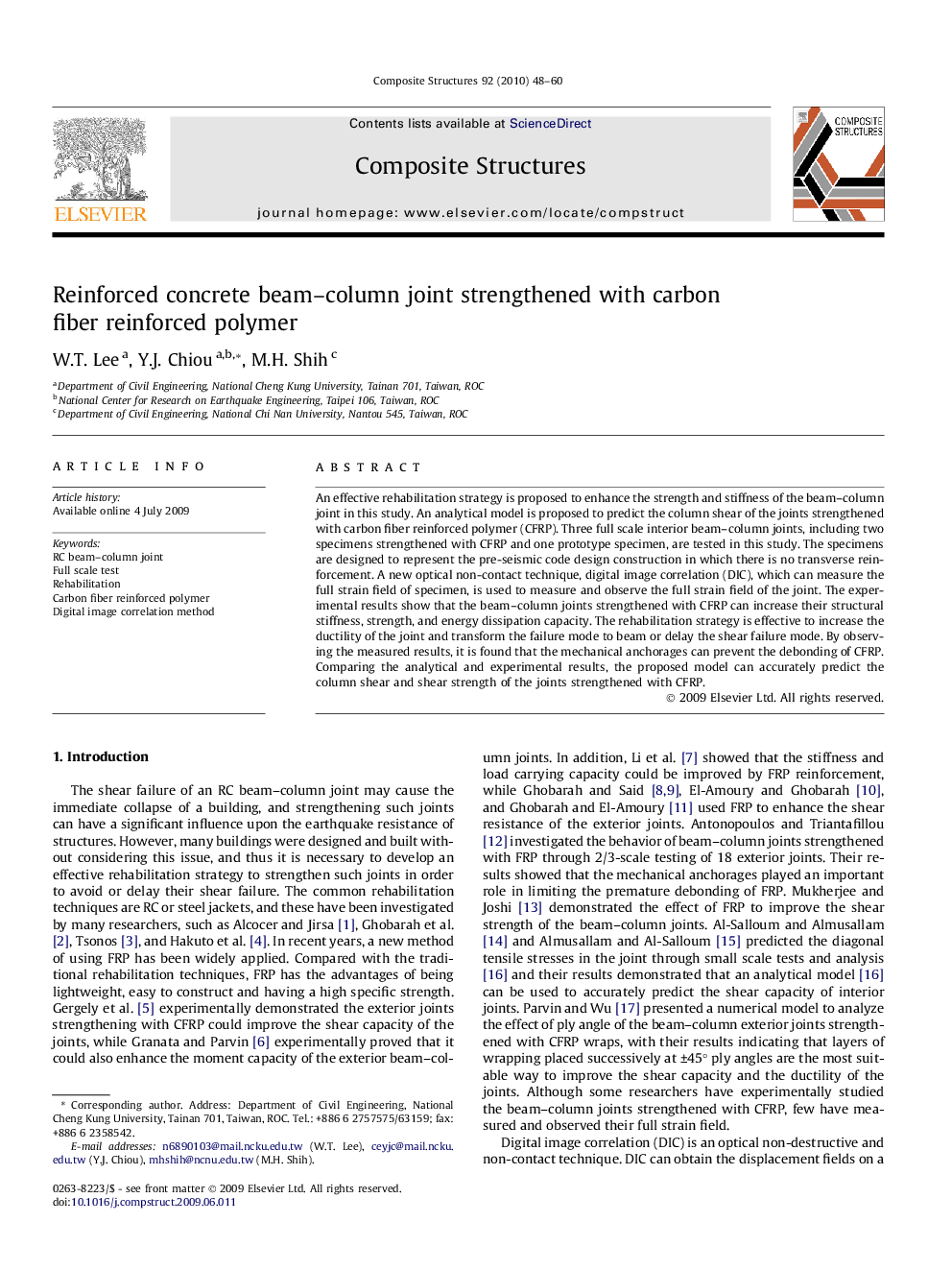| Article ID | Journal | Published Year | Pages | File Type |
|---|---|---|---|---|
| 253757 | Composite Structures | 2010 | 13 Pages |
An effective rehabilitation strategy is proposed to enhance the strength and stiffness of the beam–column joint in this study. An analytical model is proposed to predict the column shear of the joints strengthened with carbon fiber reinforced polymer (CFRP). Three full scale interior beam–column joints, including two specimens strengthened with CFRP and one prototype specimen, are tested in this study. The specimens are designed to represent the pre-seismic code design construction in which there is no transverse reinforcement. A new optical non-contact technique, digital image correlation (DIC), which can measure the full strain field of specimen, is used to measure and observe the full strain field of the joint. The experimental results show that the beam–column joints strengthened with CFRP can increase their structural stiffness, strength, and energy dissipation capacity. The rehabilitation strategy is effective to increase the ductility of the joint and transform the failure mode to beam or delay the shear failure mode. By observing the measured results, it is found that the mechanical anchorages can prevent the debonding of CFRP. Comparing the analytical and experimental results, the proposed model can accurately predict the column shear and shear strength of the joints strengthened with CFRP.
